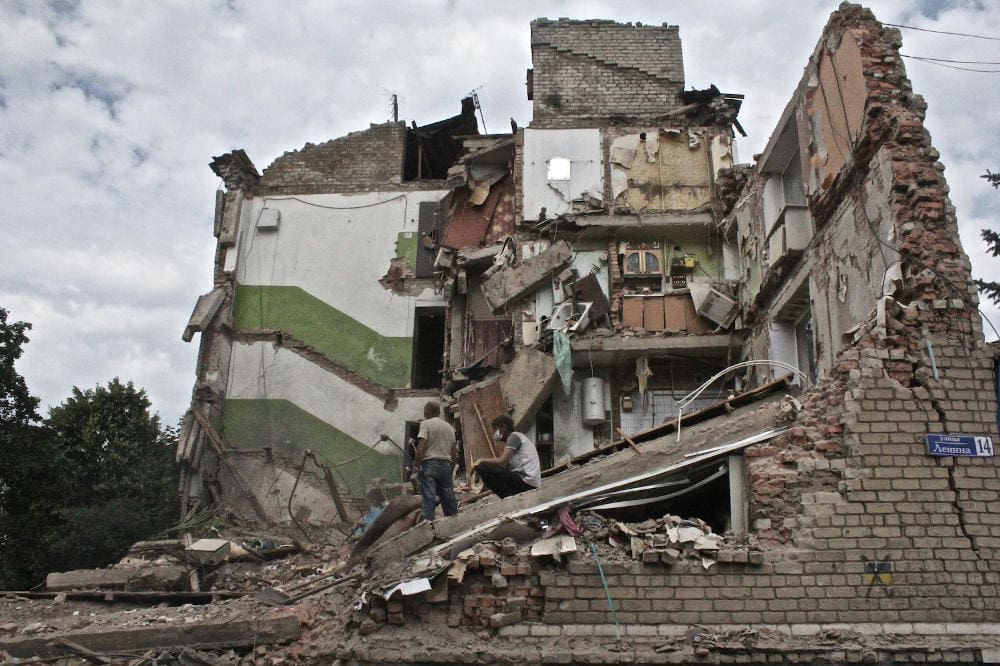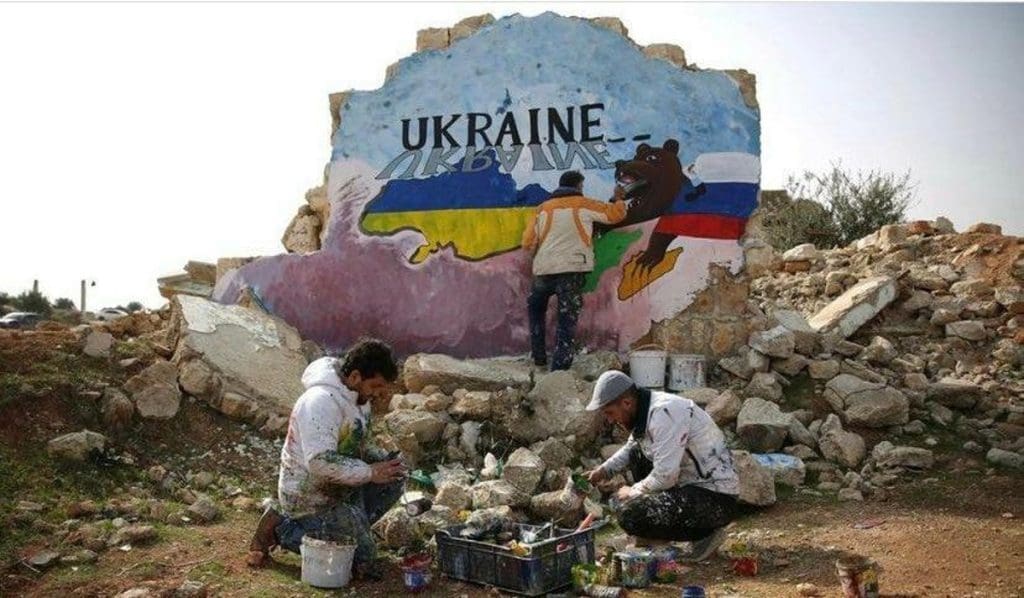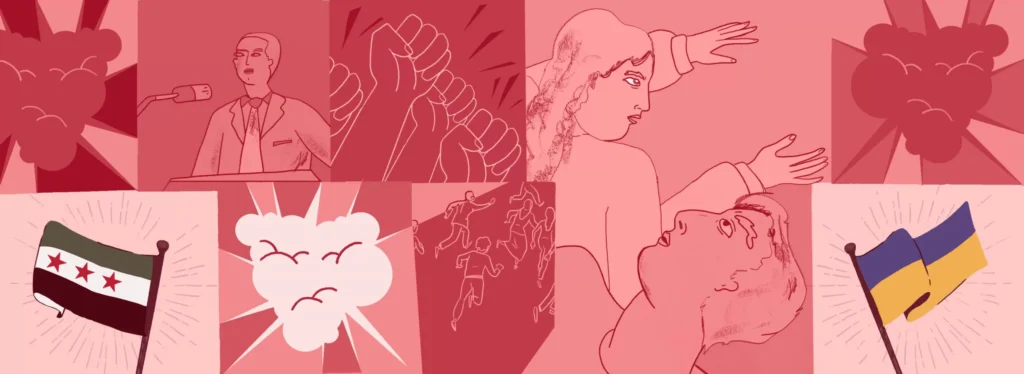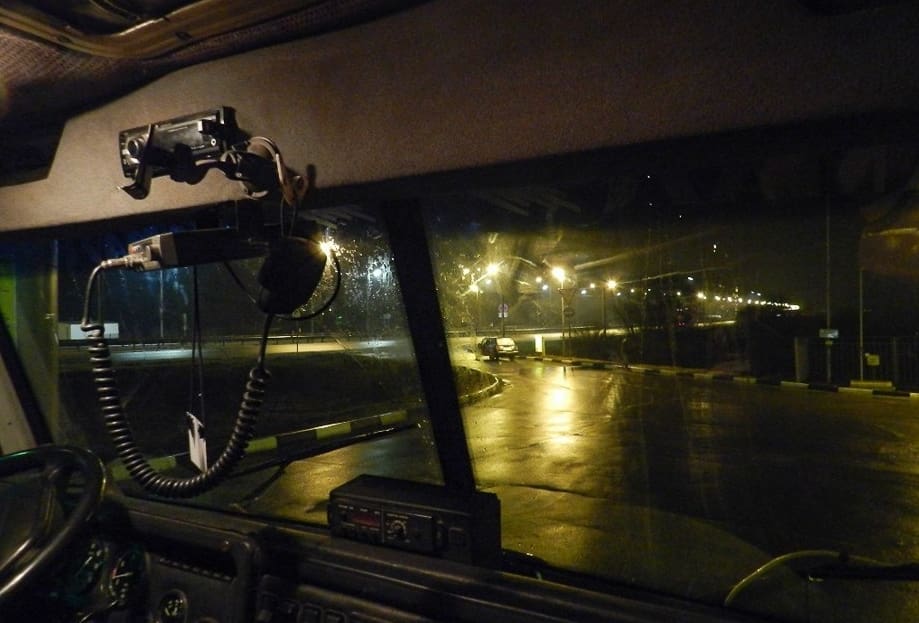by Gavin Rae for LeftEast
18 August 2014 (original post)
“What’s abnormal is not the worst. What’s normal, for example, is world war.”
—Franz Kafka
The 100th anniversary of the outbreak of the First World War takes place in a growing atmosphere of global conflict. The world seems to be once again teetering on the verge of catastrophe. A wave of violence is spreading around the globe, leaving destruction and death in its wake. This surge towards war has developed a momentum that at times seems uncontrollable. Palestine, Ukraine, Libya, Syria, Iraq – the list of conflicts is growing and war is once again becoming normal.
The anniversary of World War One should be a time of deep reflection for the left. How was it possible that the vast majority of the socialist parties in Europe could drop their avowed internationalism and fall in behind the imperialist war adventures of their countries’ elites? How could they become so subsumed with nationalism and chauvinism that they allowed millions of young men to fall on the battlefields?
In hindsight this seems incomprehensible, but history does not move in retrospection. Rather it is forged in the present, through unique events whose outcomes are unknown. It is quite possible that future generations (if they will have a future at all) will look back and gasp in horror at our acquiescence as the world slid into war.
Hundreds of thousands have demonstrated around the globe at the silence of their own governments, who have stood back and even funded the Israeli army as it rains bombs down on the prison camp of Gaza. The death count already stands at nearly 2,000 in the Gaza strip, the vast majority of whom are civilians and a large proportion of which are children.
Many of us are repulsed by the scenes of disproportionate violence and carnage, but this feeling is not unanimous. Those supporting Israel’s offensive convince themselves that this is an action of self-defense; that Israel is not to blame for the deaths of children murdered as they sleep; that it cannot be held responsible when it shells a school or a hospital and fires missiles at children playing on a beach. The victims are dehumanized and stripped of the rights afforded others.
On this peaceful sunny morning in Warsaw, war seems a distant thing, both historically and geographically. Yet as I write, new news comes through about a war raging in the country next door. On the day before, the Ukrainian army had shelled the city of Donetsk, killing at least four civilians; the Vishnevskiy hospital had been hit, leaving one dead; an ancient orthodox church had been burned to the ground after being hit by an artillery shell in Gorlovka. Just another normal day in eastern Ukraine.
These individual tragedies are adding up. According to the United Nations, by the end of July around 1,100 civilians had been killed and 3,500 wounded since the Ukrainian army had started its ‘anti-terrorist’ operations in the east. This figure does not take into account those shot down on Maidan or burned to death in Odessa. It does not include the young Ukrainian soldiers who have lost their lives after being thrust into a civil war or the passengers on flight MH17 who fell to their deaths.
A humanitarian catastrophe is unfolding in eastern Ukraine. According to the UN High Commissioner for Refugees, an estimated 730,000 people have fled Ukraine to Russia (many of whom are now living in refugee camps near the border) and a further 117,000 are internally displaced within Ukraine. In the city of Lugansk, around 250,000 people are currently without water, electricity, internet or telephone. It now seems that the war is about to move onto its next stage of street-to-street fighting in the eastern towns and cities, which is likely to bring a huge rise in casualties.
So why are we not marching for peace in Ukraine? A simplified and one-sided account of the war in Ukraine dominates the public discourse. It states that the unrest in the eastern regions is due only to the existence of Russian-funded terrorists. The only solution is to support the Ukrainian government in its ongoing military campaign, in the hope that this will shortly be successful and bring stability to the whole country. The political centre has moved to the extreme position of supporting war, and any alternative voice in this conflict is immediately cast as being part of the Kremlin’s propaganda machine.
Despite the initial hopes of some, the Maidan has not led to greater democracy and freedom in Ukraine. We have seen the transfer of political power from one set of oligarchs to another and the formation of a new administration that has—at best—a flimsy and disputed democratic mandate. The government is already collapsing as it tries to implement austerity economic policies pushed by the IMF while also funding a war. In Kiev, the remaining Maidan protesters are fighting with authorities who try to dismantle their camp.
Although the Moscow line that a fascist coup has occurred in Ukraine is exaggerated, one has to be concerned at the growing influence of the far Right in the country. This extends beyond party politics and into the numerous paramilitary groups that are fighting in the east. One such example is the Azov Battalion that is connected to the Ministry of Internal Affairs and neo-Nazi groups such as the Social National Assembly. Associated with this battalion is the MP Oleg Lyashko, who has recently been criticized by Amnesty International for his lawless behavior, carrying out abductions and detentions. Lyashko won 8% of the vote in the Presidential elections, and his Radical Party has recently been leading in opinion polls. It is not enough to simply dismiss this information by pointing to the existence of Russian nationalists amongst the rebels in the east.
A strong alternative voice for military de-escalation and negotiation is urgently needed. It is possible to both support calls for Russia to stop interfering in eastern Ukraine while also placing similar demands on our own states. At this point we have to decide on which side we stand: war or peace.
Recently there have been numerous protests by groups of mothers in western Ukraine protesting against their sons being sent to the front. They have sometimes been met by counter-protests of far-Right activists who have labeled these women traitors. On which side of such disputes do we stand?
Reports of a build-up of the Russian military are being accompanied by plans for new military drills by NATO in Poland, the biggest of its kind since the end of the Cold War. Both destabilize the region, heighten the atmosphere of war and should be opposed by those promoting peace.
By failing to stand against war at the beginning of the twentieth century, the left betrayed its own most fundamental values. These include the basic principle of internationalism: the understanding that nationalism and chauvinism divides people. In order to oppose war, we have to first protect and nurture the basic instincts of human decency and compassion.
Just as the people of Gaza have been dehumanized, so we also turn away from the citizens of Donetsk and Lugansk. We imagine this area, which is populated by millions of people, as being occupied only by ‘little green men’ from Russia who should be destroyed. We hear no outrage when the countries of the European Union give their backing to a government in the middle of Europe that is bombing its own cities.
If the experience of the past decade has taught us anything, it is that wars make situations worse, not better. In places such as Afghanistan, Iraq and Libya, military aggressions were justified as a way of bringing democracy and freedom. But war rarely leaves peace and democracy but brings chaos, disorder and more violence. There is no liberal democracy in Iraq now, there is ISIS.
Whatever different opinions we may hold on the origins of the conflict in Ukraine (NATO encirclement or Russian expansionism) it is time to set out an agenda for peace. The basic principle of a peace movement is to place pressure on one’s own government to stop escalating war and help contribute to peace. War must become abnormal again.
Reprinted with permission.
Featured image source: Sean’s Russia Blog





